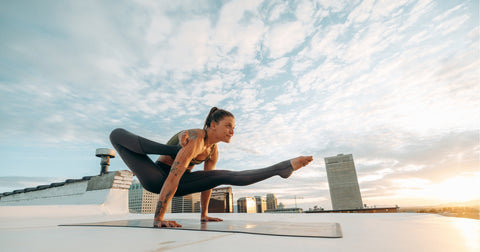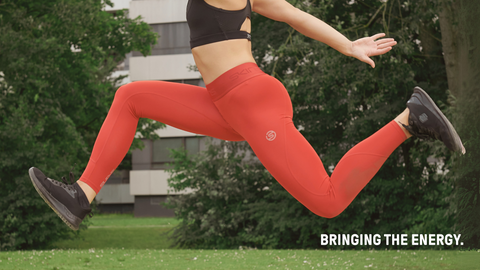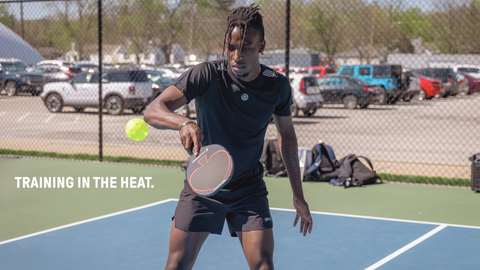Yoga is much more than a physical workout—it's a practice that strengthens the mind-body connection and enhances overall well-being. But with all the benefits yoga brings, it's easy to overlook one crucial aspect: joint stability. Whether you're a seasoned yogi or just starting out, understanding the importance of joint stability can help you maintain proper form, prevent injury, and enjoy a more fulfilling practice.
Why Is Joint Stability Important in Yoga?
Joint stability refers to the ability of a joint to maintain proper alignment and movement while under pressure or during dynamic movements. In yoga, many poses challenge your joints, especially those involving balancing, stretching, and transitioning from one posture to the next.
Here are a few reasons why joint stability is essential for yoga practitioners:
- Preventing Injury
- Unstable joints are more prone to injuries such as strains, sprains, and even dislocations. Whether you're holding a balancing pose like Warrior III or engaging in deep hip stretches in Pigeon Pose, stable joints reduce the risk of overextension or misalignment that could lead to injury.
- Enhancing Balance and Control
- Many yoga poses require fine-tuned balance and control, such as Tree Pose or Half Moon Pose. Strong, stable joints provide a solid foundation, allowing you to focus on your breath and form without worrying about wobbling or losing balance.
- Improving Alignment and Posture
- Proper joint stability helps maintain the alignment of your body, which is critical for preventing muscle imbalances and ensuring the integrity of your poses. For example, during Downward Dog, stable shoulders and wrists prevent strain, helping to distribute the weight evenly across your body.
- Supporting Flexibility and Mobility
- While flexibility is a hallmark of yoga, it's important to balance it with stability. Flexible joints without proper stability are vulnerable to overextension, which can result in injury. Joint stability ensures that your range of motion is supported by strength, allowing you to stretch safely and effectively.
Common Areas of Joint Vulnerability in Yoga
Several joints in the body are particularly vulnerable during yoga practice, especially when performing certain poses repeatedly or holding them for extended periods.
- Wrists: Weight-bearing poses like Plank, Chaturanga, and Crow Pose place a lot of pressure on the wrists. If your wrists aren't stable, it can lead to strain or injury over time.
- Shoulders: Many poses, from Downward Dog to Wheel Pose, engage the shoulders. Without stability, the shoulder joint can become overstressed, leading to discomfort or injury.
- Knees: Knee stability is crucial in standing poses like Warrior I and II, where the knees bear a lot of weight. Poor alignment and instability in the knees can lead to strains or long-term damage.
- Hips: Hip stability is key for deep stretching poses like Pigeon Pose or Lizard Pose. Stable hips ensure proper alignment and help reduce the risk of overstretching the hip flexors and surrounding muscles.
How to Improve Joint Stability in Your Yoga Practice
The good news is that there are several ways to improve joint stability and make your yoga practice safer and more enjoyable.
- Focus on Proper Alignment
- Always prioritize proper form and alignment, even in simpler poses. This creates a strong foundation for your joints, allowing them to work in harmony with your muscles and tendons. Consider using yoga blocks or straps to help with alignment until you build more strength.
- Engage Your Core
- A strong core is crucial for joint stability. Core engagement supports your lower back and pelvis, which in turn provides stability for the surrounding joints like the hips and knees. Poses like Boat Pose or Plank can help strengthen your core, enhancing joint stability throughout your practice.
- Practice Balance Poses
- Balance poses like Tree Pose or Warrior III are great for building joint stability. These poses challenge your body to stabilize, particularly around your ankles, knees, and hips. Gradually increasing your time in these poses will help strengthen the stabilizing muscles around your joints.
- Warm Up Properly
- Warming up your joints before you dive into deeper poses is essential. Simple movements like wrist rolls, hip circles, or shoulder shrugs help prepare your joints for the intensity of a full yoga session. Warm joints are more flexible and better able to maintain stability.
- Strengthen Supporting Muscles
- Muscle strength plays a key role in joint stability. Incorporate strength-building exercises into your routine, focusing on areas that support your joints, such as the shoulders, hips, and legs. Poses like Chair Pose or Dolphin Pose help build strength in these areas, making your joints more resilient.
How Compression Gear Can Complement Joint Stability
While yoga naturally strengthens the joints over time, adding compression gear to your routine can offer extra support. Compression wear can help by providing gentle pressure around key joints like the knees and ankles, offering a sense of security and stability during poses that challenge balance and flexibility.
By promoting circulation, compression gear also helps reduce inflammation and fatigue, which can be especially beneficial during longer sessions or if you practice more intense styles like Ashtanga or Vinyasa yoga. When your muscles and joints feel supported, you can focus on maintaining proper form, which ultimately enhances your stability and overall practice.
Conclusion
Joint stability is a key factor in maintaining a safe and effective yoga practice. From preventing injury to improving balance and alignment, stable joints allow you to practice with confidence and peace of mind. By focusing on proper alignment, building strength, and incorporating supportive tools like compression gear, you can protect your joints and deepen your yoga journey.
Next time you hit the mat, pay attention to your joints and how they feel in each pose. A little awareness and effort toward stability can go a long way in enhancing your practice and keeping you injury-free.






